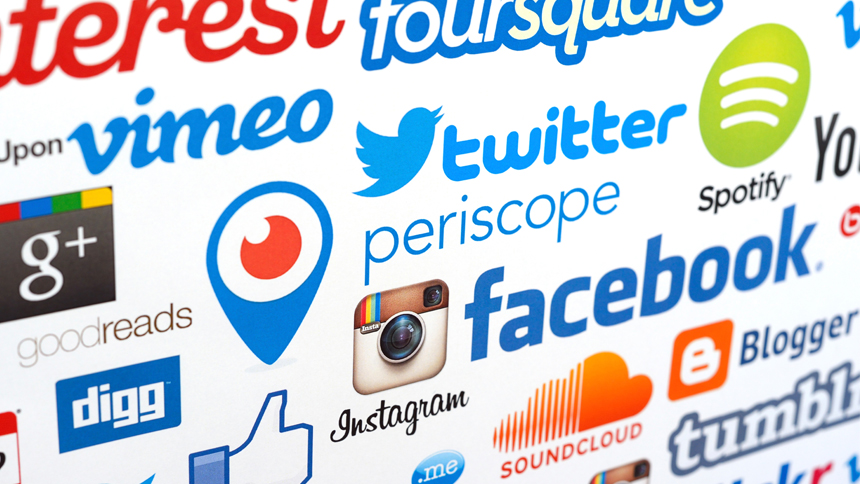There are plenty of authors who write for love of the craft. Most of us, though, desire for our carefully crafted words to be read by the masses as we rake in millions.
When it comes to literary validation, hitting the best-seller lists is one of the most universally recognized achievements.
Also on Mediabistro


Even the most humble scribes don’t hesitate to add “New York Times best-selling author” to their titles once they’ve reached that coveted status.
But the reality is that landing on high-powered rankings takes more than just talent and a killer plot. Indeed, becoming a best-selling author is just as much about marketing and promotion as the actual writing.
That’s a scary notion for us introverted folks who would much rather hide behind our bylines than scream from the mountaintops for readers to “buy my book — now!”
So with that in mind, we’ve culled a list of tips to help ensure that your next book reaches more than your creative writing group members. Follow these six steps, and you’ll be a certified best-seller in no time.
Give the people what they want
Rule No. 1 for becoming a best seller: Understand that the work starts way before the book is released — as in, while you’re still writing.
And if you want to shore up sales in advance, the key is to know your prospective audience and write with them in mind.
“Think of what the felt need is and how you’re going to reach someone,” says literary agent Esther Fedorkevich, founder of The Fedd Agency.
“If you’re writing a women’s book on dieting, you need to be thinking, ‘What is going to resonate with that woman? What will the publicity angle be when the book does go on sale? What are people going to be drawn to and remember about the book?'”
Decide on a publishing path
To self-publish or work with a traditional publisher? That is the question many authors have wrestled with as industry tides have shifted in favor of eBooks and do-it-yourselfers.
And while some without a well-established platform may not have much of a choice (if large publishers do not show interest in working with them), the decision isn’t always so simple.
Often, the best plan is to consider potential promotional opportunities and choose the publishing route that will most effectively enable authors to successfully market their book.
“The beautiful thing about self publishing is that you don’t have to wait; when your book is done, you can have it up and out as an eBook two weeks later,” says Fedorkevich. “With a traditional publisher, once the manuscript is done, it’s a year later before your book is releasing.
So if you know something big is happening or you have a lot of speaking dates or something and need your book out now, then you need to self-publish.”
Forget about social media
A solid promotional plan that guarantees sales should kick off at least six to nine months in advance of a book’s release, and most authors probably assume this “plan” includes posting desperate sales pleas on Facebook and Twitter a dozen times a day.
But according to Tim Grahl, author of Your First 1000 Copies: The Step-By-Step Guide to Marketing Your Book, social media is generally a big waste of time.
“Social media is the 90 percent of work that gets you 10 percent of results,” Grahl explains. “I’ve launched books with people that have had well into six figures of Twitter followers, and the amount of book sales that come from that are pitifully low.”
So what’s the solution? According to Grahl, every presence a writer has should be leveraged to gather contact information from potential readers, whether via speaking engagements or their website’s homepage.
“The No. 1 thing every author should be doing, if they’re not doing anything else, is building an email list because that’s where you start getting direct access to people,” he adds.
“If you’re on Twitter and you follow just 100 people, you don’t even see 1 percent of all the updates that come through in a single day. But if you think about how you interact with your email, you probably look at 95 percent or 100 percent of the emails that come in. That’s why you need to show up where people are actually paying attention — their inbox.”
Sell yourself, not the book
This may seem a bit counterintuitive, but aggressively pushing your current title — in lieu of promoting your personal brand as an author — is an ill-conceived plan that can actually stunt book sales. Literary mega-stars like Stephen King and John Grisham have a built-in fan base that buys every book they release, almost automatically.
And that, says Grahl, should be the goal of every writer — particularly those who have aspirations to write in multiple genres or cover various topics.
“If you’re trying to build something up for a specific book, that’s really short-term thinking because this is hopefully going to be one book of many that you’re going to write,” says Grahl. “And you need people to be fans of you more than any one book.”
Hire experts to help
Despite solo efforts to reach readers through email lists, speaking engagements and the like, when it comes to generating massive buzz, traditional media is still king.
However, most writers don’t have producers at Good Morning America on speed dial. That’s when bringing in a qualified, experienced professional can help.
Meryl Moss is the president of Meryl L. Moss Media Relations and the founder of the literary website BookTrib.com. Together with her team, she landed three books on The New York Times best-sellers list this past June alone, including Spartan Up!, by Joe De Sena with Jeff O’Connell; The Lincoln Myth, by Steve Berry; and FaceOff, edited by David Baldacci.
“It is important to consider hiring not just a professional, but a professional team that has a track record of success, specifically with authors and books,” says Moss.
“A roadmap and strategy for a campaign should be provided that includes targeting traditional media (TV, radio, print) as well as online media (well-trafficked, branded websites and blogs); securing speaking engagements; and launching a social media campaign and Goodreads program. It should also include a unique set of marketing ideas that cater to the book’s specific audience. I have found that a team with different strengths is required to execute a strong cohesive strategy designed to deliver results.”
Don’t worry about being a best-seller
What’s that you say? How can you land on the best-sellers lists if you’re not really trying to? Well, says Grahl, if your aim is to be a successful author well into the future, jockeying for pole position may not be your most important task.
“Typically books that hit the best-sellers lists do it within the first two weeks of release for two reasons: One is that all of your presales count for that first week; also, it’s much easier to get media buzz around new books,” Grahl says.
“But I don’t think most writers should care about the best-sellers list. Some books generate, say, 4,000 sales in a week, and they were able to hit the best-sellers list. But then if you look at total sales, it drops off and they don’t sell another 500 the rest of the life of the book.”
So, again, it’s better to be concerned about your long-term potential. “I’m not after getting a ton of sales in one week; I just want [my book] to keep selling, keep selling, keep selling,” adds Grahl. “That’s what’s going to get my name out more; that’s what’s going to connect me to more readers.”
Inspire your Readers
To conclude, the journey to becoming a best-selling author is multifaceted, requiring a blend of creativity, strategic marketing, and a deep understanding of your audience. It’s crucial to remember that writing a compelling book is just the starting point. The real challenge lies in effectively promoting it and building a personal brand that resonates with readers beyond a single title.
Navigating the publishing world, whether through traditional means or self-publishing, is a critical decision that impacts your book’s reach. Moreover, leveraging tools like email lists and traditional media while focusing on long-term reader engagement rather than immediate best-seller status can significantly influence your success as an author.
The path to becoming a best-selling author is not solely about chasing a title or a list. It’s about understanding and embracing the intricate dance of writing, marketing, and connecting with your audience. By doing so, you’re not just selling a book; you’re building a legacy as an author whose works continue to captivate and inspire readers year after year. Remember, persistence, adaptability, and genuine engagement are the keys to long-term success in the writing world.
This interview has been edited for length and clarity.









